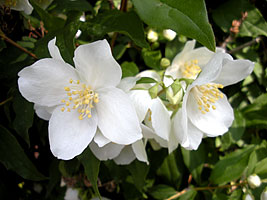Ever try to read out and make sense of a notes listing for a fragrance you love? Just what on Earth is muguet supposed to be? How do you even say that? And what’s this coumarin that everyone keeps talking about? And if you thought the notes list was complicated enough, just wait until you hear about the stuff they don’t list.
The following is a brief overview of some perplexing but common notes you might see in perfume.
Benzoin: Pronounced, “ben-zoh-in”, can refer to either the “benzoin resin” from trees in the Styrax genus or the organic compound, “benzoin”. Benzoin resin has a creamy, honey and vanilla fragrance.
Champaca: Pronounced, “cham-puk-uh”, is a tree from the magnolia family. It smells woodsy, spicy and green.
Coumarin: Pronounced, “koo-muh-rin”, is a chemical compound found in tonka beans, sweet grass, and a wide variety of other plants. It has a sweet hay scent.
Galbanum: Pronounced, “gal-bun-num”, is a gum resin from plants of the Ferula genus. It has a green, herbaceous and bitter scent.
Labdanum: Pronounced, “lab-dun-num”, is a resin obtained chiefly from plants of the Cistus genus. Labdanum smells sweet, dry and woodsy.
Muguet: Pronounced, “mew-gey”, is Lily-of-the-Valley. It has a light, very sheer but distinctive sweet aroma.
Olibanum: Pronounced, “O-lib-bun-num”, is frankincense. Smells like incense to me.
Opopanax: Pronounced, “oh-pop-pan-nax”, is a gum resin that smells woodsy and lightly floral undertones.
Oud: Pronounced, “ooh’d”, sometimes referred to as agarwood is the resin that is produced when an Aquilaria tree is infected with mold. Oud is said to smell dense, sweet, warm, and woodsy.
Ylang Ylang: Pronounced, “ee-lang ee-lang”, is a flowering tree. Ylang ylang has a delicate, white floral fragrance.




